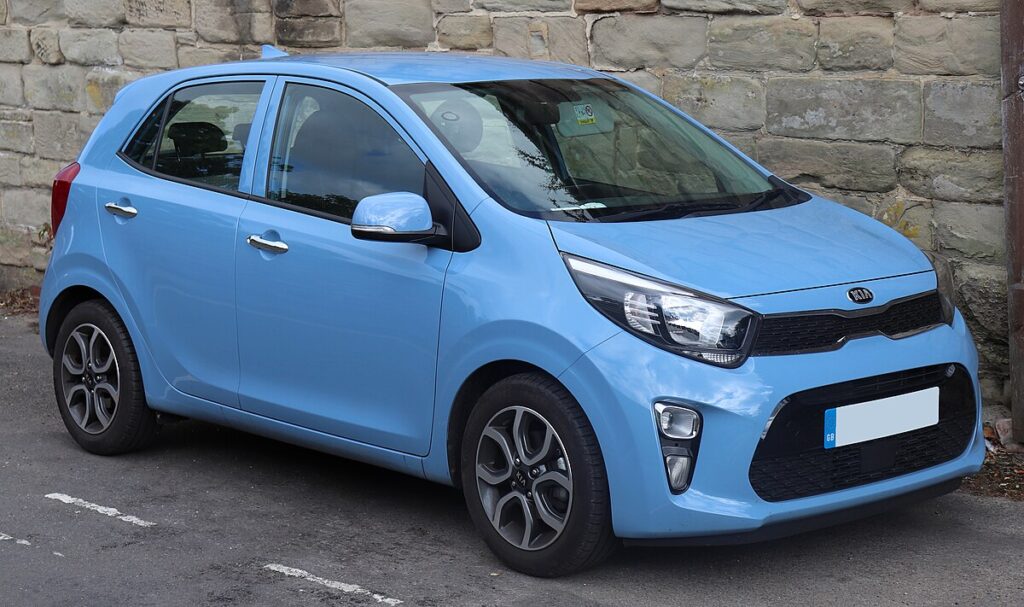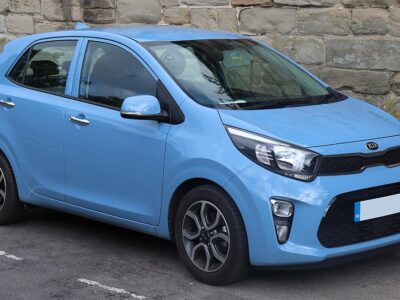
Kia Picanto Battery Replacement: The Complete Owner’s Guide

- Understanding the Role of Your Picanto’s Battery
- Why Kia Picanto Batteries Fail
- Signs Your Picanto Needs a New Battery
- Choosing the Right Battery for Your Kia Picanto
- Tools You’ll Need for a Safe Battery Replacement
- Step-by-Step Kia Picanto Battery Replacement
- Preparation Phase
- Removal Phase
- Installation Phase
- Post-Installation Checks
- How Long Does a Picanto Battery Last?
- How to Extend Battery Life
- Cost of a Kia Picanto Battery Replacement
- Common Mistakes to Avoid
- Where to Buy the Best Batteries for Picanto
- When a Battery Replacement Isn’t the Real Problem
- Environmental Impact of Old Batteries
- Conclusion: Give Your Picanto the Spark It Deserves
- FAQs
Understanding the Role of Your Picanto’s Battery
Every journey begins with a spark—literally. The battery in a Kia Picanto isn’t just a silent box under the bonnet; it’s the heartbeat that pulses life through the engine, lights, infotainment system, and the tech we rely on daily. When that heartbeat starts stuttering, we feel it immediately. We’ve all been there—turning the key, only to hear a weak click that sounds like the car whispering, “Help.”
Understanding how this small component works, when to replace it, and how to do it safely ensures we keep the Picanto running smoothly without unexpected roadside surprises.
Why Kia Picanto Batteries Fail
Let’s face it—no battery lasts forever. But some give up far earlier than we expect. Common causes include:
- Frequent short trips
- Extreme heat or cold
- Poor-quality replacement batteries
- Leaving lights or accessories on
- Natural aging (typically 3–5 years)
When batteries start declining, the signs appear gradually—slow cranking, dim headlights, warning lights flickering, and that feeling that the car is suddenly “tired.”
Signs Your Picanto Needs a New Battery
If you’ve been wondering whether your Picanto is trying to tell you something, here are the signals it’s sending:
Slow Engine Crank
If the engine hesitates to start, as if yawning awake, the battery may be losing charge capacity.
Dashboard Battery Light
This isn’t a gentle suggestion—it’s a shout. If the battery icon appears, check voltage and replace the battery promptly.
Corrosion on Battery Terminals
Powdery white or blue buildup indicates chemical leakage and declining battery health.
Electrical Glitches
Flickering lights, malfunctioning radio, erratic interior electronics—these “ghost issues” often point to a weak or dying battery.
Age Over Three Years
Even a healthy battery starts weakening past the 3–5 year mark, especially in warm climates.
Choosing the Right Battery for Your Kia Picanto
Here’s where many Picanto owners get it wrong—buying the wrong battery. Choosing correctly ensures peak performance and longer lifespan.
Correct Battery Size
For most Kia Picanto models (2004–2024), the common battery groups include:
- Type 063
- Type 053
- Type 075
- Start-Stop models: AGM battery (commonly Type 096 AGM)
Always verify with your manual or existing battery sticker.
AGM vs. Standard Lead-Acid
Start-stop Picantos require AGM, which resists vibration and handles repeated engine restarts. Using a normal battery in a start-stop model isn’t just risky—it can fry electronics.
What Specs Matter Most?
- Cold Cranking Amps (CCA): Higher means easier starts in cold weather.
- Ampere Hours (Ah): Determines how long the battery can supply power.
- Voltage: Always 12V for Picanto.
Recommended Brands
We prefer:
- Bosch
- Varta
- Yuasa
- Exide
These offer long lifespan, strong CCA, and excellent reliability.
Tools You’ll Need for a Safe Battery Replacement
Before diving under the bonnet, grab:
- 10mm spanner or socket
- Gloves
- Protective eyewear
- Battery terminal brush
- Dielectric grease
- Memory saver (optional to retain radio presets)
With these, replacing the battery becomes straightforward—like swapping out a giant AA battery, only a bit heavier.
Step-by-Step Kia Picanto Battery Replacement
Replacing a battery shouldn’t feel like defusing a bomb. Follow our guided process and you’ll be done in under 20 minutes.
Preparation Phase
Step 1: Park Safely
Park on a flat surface, engage the handbrake, and switch off all electronics.
Step 2: Open the Bonnet
Use the release lever inside the cabin, then lift the bonnet and secure the stay.
Step 3: Identify the Battery
On the Picanto, it’s usually positioned front-right near the fuse box.
Removal Phase
Step 4: Disconnect the Negative Terminal
Always remove negative (black) first.
Why? Because it prevents sparks—simple but crucial.
 Kia Picanto Handbrake Adjustment: The Complete Guide for Smooth, Safe Braking
Kia Picanto Handbrake Adjustment: The Complete Guide for Smooth, Safe BrakingStep 5: Remove the Positive Terminal
Loosen the positive (red) terminal. Keep cables aside where they won’t touch metal surfaces.
Step 6: Unbolt the Battery Clamp
Remove the bracket securing the battery. This frees it from its tray.
Step 7: Lift the Battery Out
Use both hands—it’s heavy. Pull straight up to avoid tipping acid residue.
Installation Phase
Step 8: Clean the Battery Tray
Dirt and corrosion shorten battery lifespan. A quick brush helps.
Step 9: Insert the New Battery
Ensure the terminals are in the same orientation as before.
Step 10: Secure the Clamp
Reinstall the battery bracket to prevent vibration.
Step 11: Connect the Positive Terminal First
This time we reverse the order:
Positive → Negative
Step 12: Connect the Negative Terminal
Tighten until snug—not overly tight.
Step 13: Apply Dielectric Grease
This delays corrosion and makes future removals easier.
Post-Installation Checks
Step 14: Start the Engine
If it fires up quickly, you’ve nailed it.
Step 15: Reset Digital Settings
Depending on the trim, you may need to reset:
- Clock
- Radio presets
- Trip meter
- Window auto-up (if equipped)
Step 16: Check for Warning Lights
If the battery or charging light stays on, test alternator output.
How Long Does a Picanto Battery Last?
In real-world use, we’ve seen:
- Standard batteries: 3–4 years
- AGM batteries: 4–6 years
- Hot climates: lifespan reduced by 20–30%
Driving habits matter too. Short trips mean the alternator never fully recharges the battery.
How to Extend Battery Life
Think of battery life like physical fitness—it declines unless maintained. Here’s what works:
Drive Longer Trips Weekly
A 15–20 minute drive charges the battery properly.
Avoid Leaving Electronics On
Phone chargers, lights, dash cameras—they slowly drain energy.
Keep Terminals Clean
Corrosion increases resistance, straining the battery.
Check Voltage Regularly
Healthy voltage: 12.4–12.7V (engine off)
Charging voltage: 13.8–14.4V (engine on)
Avoid Cheap Batteries
They often fail early and cause electrical quirks.
Cost of a Kia Picanto Battery Replacement
Here’s what to expect depending on region and model:
Parts Cost
- Standard 063: £45–£70
- AGM start-stop: £90–£160
Labour Cost
- Independent garages: £10–£25
- Dealership: £30–£50
DIY Cost
Just the battery—your labour is free and satisfying.
Common Mistakes to Avoid
We’ve seen these far too often:
You may be interested in reading Kia Picanto Handbrake Adjustment: The Complete Guide for Smooth, Safe Braking
Kia Picanto Handbrake Adjustment: The Complete Guide for Smooth, Safe Braking Kia Picanto Key Battery Replacement: The Complete, Stress-Free Owner’s Guide
Kia Picanto Key Battery Replacement: The Complete, Stress-Free Owner’s GuideInstalling the Wrong Battery Type
Start-stop models must use AGM.
Reversing Polarity
Mixing up positive and negative can fry the ECU instantly.
Not Tightening Terminals
Loose cables cause intermittent faults.
Ignoring Corrosion
It spreads like rust in slow motion.
Skipping Voltage Testing
A dying alternator will destroy a new battery quickly.
Where to Buy the Best Batteries for Picanto
Reliable sources include:
- Euro Car Parts
- Halfords
- Amazon (from reputable sellers)
- Local auto electricians
- Battery specialists
Always check return policies and warranty periods (preferably 3–5 years).
When a Battery Replacement Isn’t the Real Problem
A surprising number of “dead battery” complaints turn out to be something else:
Faulty Alternator
Low charging voltage (<13.8V) means the battery isn’t the culprit.
Parasitic Drain
Dashcams, alarms, and damaged wiring can drain power overnight.
Bad Earth Straps
Corroded grounding points reduce electrical flow.
Starter Motor Issues
Slow cranking might be a weak starter, not a weak battery.
When in doubt, get a multimeter test.
Environmental Impact of Old Batteries
Car batteries contain lead and acid—improper disposal harms land and water ecosystems.
Always Recycle Properly
Most suppliers take your old battery for free.
Avoid Home Disposal
Never landfill a battery—it’s illegal in many regions.
Conclusion: Give Your Picanto the Spark It Deserves
When we look after our Kia Picanto’s battery, we’re really looking after the whole driving experience. A strong battery means smooth starts, bright headlights, dependable electronics, and fewer roadside dramas. Replacing it isn’t complicated—most of us can get it done in minutes. With the right tools, a bit of confidence, and the steps we’ve outlined, maintaining your battery becomes part of car ownership you actually control, instead of something that surprises you at the worst moment.
If your Picanto is cranking slowly, lights are dimming, or your battery is older than your favourite binge-watch series—give it a fresh spark. Your little city car will reward you with reliability for years to come.
FAQs
1. How long does a Kia Picanto battery last?
Most Picanto batteries last 3–5 years depending on driving habits, climate, and battery quality.
2. What battery type does a start-stop Picanto use?
Start-stop Picantos require AGM batteries—standard ones are not compatible.
3. Can I replace a Picanto battery myself?
Yes. With a 10mm spanner and basic safety steps, most owners can do it in under 20 minutes.
4. Why does my new battery drain quickly?
Possible causes include alternator failure, parasitic drain, old wiring, or poor battery quality.
5. Do I need to reprogram anything after replacement?
Some models require clock and radio reset, and in rare cases idle relearning.
You may be interested in reading Kia Picanto Handbrake Adjustment: The Complete Guide for Smooth, Safe Braking
Kia Picanto Handbrake Adjustment: The Complete Guide for Smooth, Safe Braking Kia Picanto Key Battery Replacement: The Complete, Stress-Free Owner’s Guide
Kia Picanto Key Battery Replacement: The Complete, Stress-Free Owner’s Guide Volkswagen T-Cross Boot Size: The Complete, No-Nonsense Guide for Real-World Use
Volkswagen T-Cross Boot Size: The Complete, No-Nonsense Guide for Real-World UseIf you want to know other articles similar to Kia Picanto Battery Replacement: The Complete Owner’s Guide you can visit the category Service and Parts.
Deja una respuesta




More content of your interest